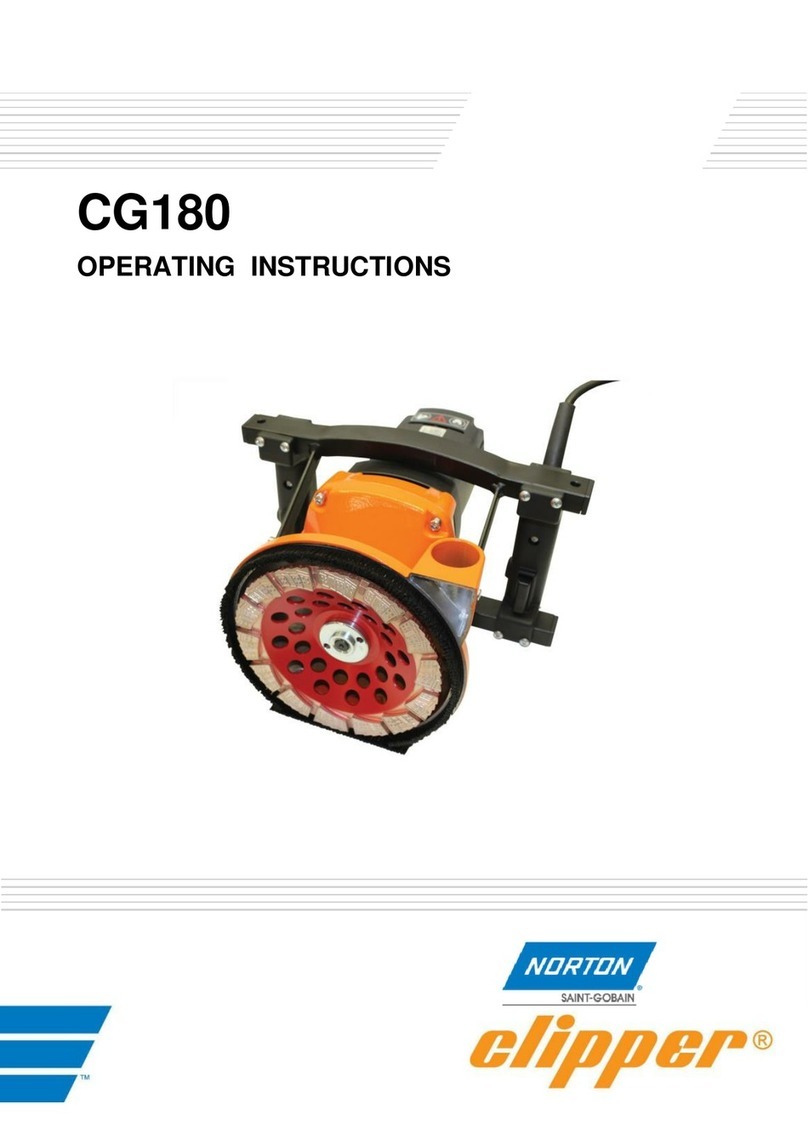
- 2 -
Failure to read, understand and follow these safety warnings and instructions
may result in serious injury or death to the operator and/or bystanders.
General safety rules
-
Only qualified and trained operators should install, adjust or
use the power tool.
-
Comply with all applicable standards including ANSI B7.7
Safety Requirements for Abrading Materials with Coated
Abrasive Systems and ANSI B186.1 Safety Code for
Portable Air Tools.
-
Do not modify this power tool.
-
Do not discard the safety instructions; give them to the
operator.
-
Do not use this power tool if it has been damaged.
-
Inspect this power tool periodically to verify that the RPM
rating and markings on the tool are legible.
Accessory and Projectile hazards
Failure of the accessory, tool or work-piece
can generate high-velocity projectiles.
-
NEVER mount a grinding wheel or cut-off wheel on this
tool. This is a sanding/deburring tool. A cut-off or
grinding wheel that bursts can cause serious injury or
death.
-
Always wear ANSI Z87+ approved impact resistant eye and
face protection.
-
The maximum operating speed of the accessory shall equal
or exceed the rated speed marked on the tool. NEVER
exceed the MAX RPM rating marked on the accessory.
-
Use barriers to protect others from fragments and sparks. Be
sure bystanders are made aware of the work, and also wear
approved eye and face protection.
-
Securely fix the work-piece.
-
Disconnect the power tool from the energy source when
changing inserted tool or accessories.
-
Use only accessories that are recommended by the power
tool manufacturer.
Operating and workplace hazards
Use of the tool can expose the operator to
hazards including impact, cuts, abrasions
and/or heat.
-
Wear suitable gloves to protect hands.
-
Hold the tool correctly and have both hands available.
-
Maintain a balanced body position and secure footing.
-
Release the start-and-stop device in the case of an
interruption of the energy supply.
-
Prevent slipping, tripping and fall hazards. Be aware of
slippery surfaces and trip hazards caused by the air hose.
-
Do not use the power tool in potentially explosive
atmospheres.
-
Do not allow spark stream near flammable materials.
-
Make sure to avoid contact with electrical cables, gas pipes,
etc., that can cause a hazard if damaged by use of the tool.
Dust and fume hazards
Dust and fumes generated when using
power tools can cause illness.
-
Evaluate the hazards of the dust created/distributed during
sanding.
-
Review the SDS for the work-piece. Some dust created may
contain chemicals known to cause cancer and birth defects.
Examples are: lead from lead based paint, crystalline silica
from cement and masonry products, arsenic and chromium
from treated lumber. Use appropriate respiratory protection.
-
Use respiratory protection in accordance with employer's
instructions and as required by occupational health and
safety regulations.
-
Operate the tool to minimize dust and fume emissions.
Control dust or fumes at the point of emission.
Entanglement hazards
Contact with rotating parts can cause serious
injury.
-
Do not wear loose-fitting gloves or gloves with cut or frayed
fingers.
-
Keep hands away from rotating components.
Noise hazards
Exposure to high noise levels can cause
permanent and disabling hearing loss.
-
Use hearing protection in accordance with employer's
instructions and as required by occupational health and
safety regulations.
-
Operate and maintain the power tool as recommended in the
instruction handbook, to prevent an unnecessary increase in
noise levels.
-
If the power tool has a silencer, always ensure it is in place
and in good working order when the power tool is operating.
Vibration and repetitive motion hazards
Exposure to vibration can cause damage to
the hands and arms.
-
Keep your hands warm and dry while using the power tool.
-
If you experience numbness, tingling, pain or whitening of
the skin in your fingers or hands, stop using the power tool,
tell your employer and consult a physician.
-
Operate and maintain the power tool as recommended in the
instruction handbook, to prevent an unnecessary increase in
vibration levels.
-
Hold the tool with a light but safe grip. Risk of vibration injury
is generally greater with tighter grips.
Additional safety instructions for pneumatic
power tool
-
Compressed air can cause severe injury.
-
Always shut off air supply, release air pressure in hose and
disconnect tool from air supply when not in use. Do the same
before changing accessories or making repairs.
-
Never direct air at yourself or anyone else.
-
Always check for damaged or loose hoses and fittings.
Whipping hoses can cause severe injury.
-
Direct cold air away from the hands.
-
Do not exceed the maximum air pressure stated on the tool.
-
Never carry an air tool by the hose.
WARNING






















